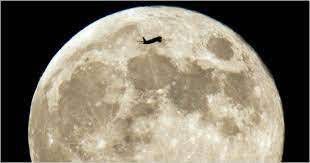A new study has revealed that the Moon is gradually shrinking, leading to a growing number of landslides that may threaten future astronauts.
The study disclosed that the Moon’s core has cooled which made it lose as much as 100m in circumference over the last few hundred million years.
Researchers from the University of Maryland, US, said this may seem like a gradual process, but the shrinkage is causing significant surface warping in parts of the Moon’s south pole – including areas proposed for NASA’s crewed Artemis III landings.
Since the moon’s shrinking is accompanied by seismic activity like moonquakes, scientists warned that locations near fault zones could pose dangers to future human explorers.
“The global distribution of young thrust faults, their potential to be active and the potential to form new thrust faults from ongoing global contraction should be considered when planning the location and stability of permanent outposts on the Moon,” said study co-author Thomas Watters from the National Air and Space Museum.
In the new study, researchers linked faults located in the Earth’s natural satellite southern polar region to one of the most powerful moonquakes recorded by Apollo seismometers over 50 years ago.
They discovered that some parts of the Moon’s south pole were particularly vulnerable to landslides from seismic shaking.
But unlike earthquakes, which last only a few seconds, moonquakes could last for hours and even a whole afternoon, meaning these shallow quakes can devastate future human settlements.
This is because the Moon has loose sediment on its surface formed from billions of years of asteroid and comet collisions.
With plans evolving to ultimately establish a long-term presence on the lunar surface, researchers hope to scope out the Moon further to identify more locations that may be dangerous for human exploration.




